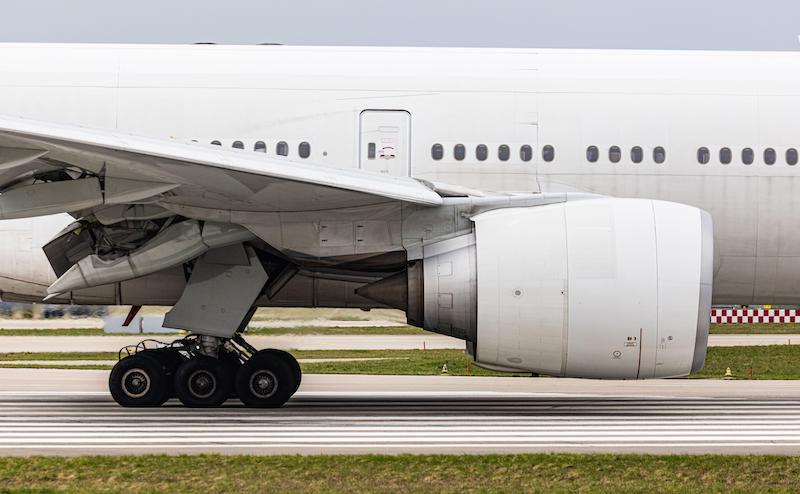
The GE90 returned to 100% equivalent 2019 utilization back in early 2024.
Aviation Week’s Aero-Engines Europe (Sept. 10-11, Amsterdam) is rapidly approaching, and with that in mind, this week’s Flight Friday looks at the flight cycles of specific engines powering widebody aircraft, comparing them to the equivalent month in 2019.
General Electric (GE) accounts for three of the selected engines on the chart. At the pandemic’s start, the CF6 did not drop as low as all the other selected engines. The CF6-powered widebodies were aided by the fact that the CF6 powers many cargo aircraft. During the pandemic, with the shortage of available belly cargo space due to the suspension of routes, cargo aircraft saw an increase in utilization. In July 2019, the CF6 powered more than 300 Boeing 767 freighters, over 125 747 freighters, nearly 100 MD-10/11 aircraft, and 70 Airbus A300 freighters, meaning that flight cycles by these engines were less impacted.
With all the success of the freighter CF6s—the utilization quickly recovered to more than 80% of the equivalent month in 2019, even with the increase of cargo-powered CF6 aircraft, up from a little over 600 in July 2019 to a little over 700 in July 2024—the removal of many passenger powered CF6 aircraft, from 650+ in July 2019 to below 400 in July 2024, means that the utilization is now plateauing at that 80% mark.
The GE90 returned to 100% equivalent 2019 utilization in early 2024. The GE90 rebounded quite quickly as it provided power to the 777 freighter. With almost 170 in service in July 2019, which has grown by 100 aircraft by July 2024, the GE90 levels recovered quite well. The passenger GE90-powered 777 fleet has decreased by 75 aircraft over the same time frame, which hinders its growth, but hope remains that the GE90 figures will stay at the 100% 2019 levels for a little while longer.
The GENX has limited exposure to the cargo market as it is only on the 747-8F, but the utilization soared, returning to 100% back at the start of 2022. The GENX numbers are bolstered by the fact that airlines wanted to use the latest-generation engine technology on their flights to help keep costs down, so favored using 787s—and add to the fact that GENX-powered 787 deliveries have continued throughout the whole period, contributing to the aggregated numbers. Flight cycles are up more than one-third on equivalent 2019 levels and will continue to grow as more GENX-powered 787s are delivered.
The Pratt & Whitney PW4000 fleet consisted of a little over 200 cargo aircraft in July 2019, and almost 500 passenger aircraft. The cargo fleet has remained static—however, the passenger fleet has lost around 150 aircraft. The PW4000 widebody fleet had a dip in utilization in early 2021—after the uncontained engine failure of a United Airlines 777 flight from Denver—which ended in May 2022 as the FAA issued paperwork to allow United to return their PW4000-powered 777s back into service.
The Rolls-Royce Trent is utilized by a very limited number of cargo aircraft, but is very prevalent in the passenger market. The Trent took until the beginning of 2024 to return to 100% of 2019 levels, but the Trent had its biggest boost after China abolished its zero-COVID policy in late 2022. This resulted in a significant step-change as Trent-powered A330s were put back into service by Chinese operators. The Trent fleet in July 2024 is almost 200 aircraft more than in July 2019 due to the continued delivery of the A350 and the A330neo.
This data was put together using Aviation Week’s Tracked Aircraft Utilization tool.





